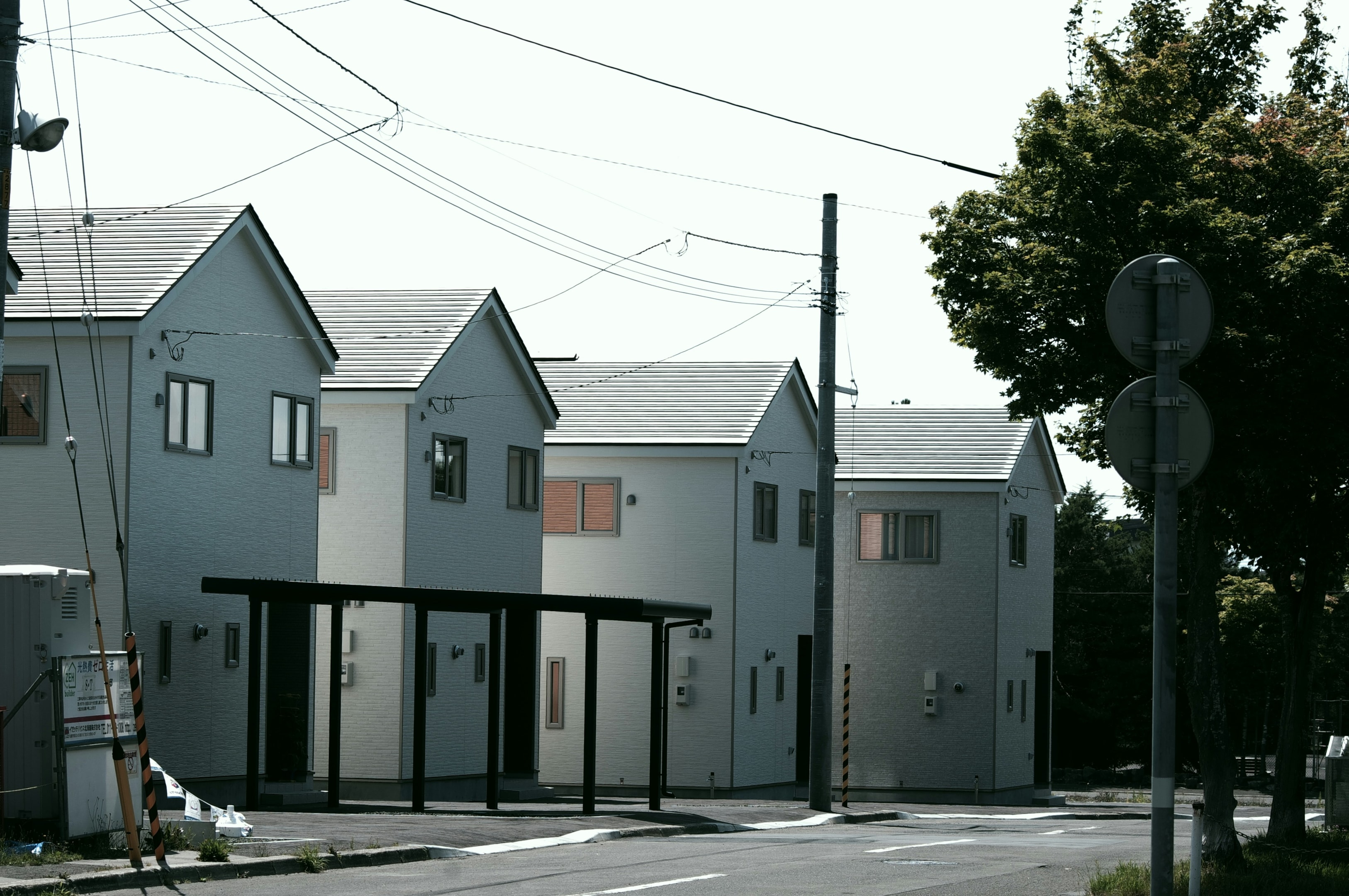Section 8 Rentals as Investments: The Complete Guide for Real Estate Investors
Why Section 8 Rentals Deserve Investor Attention
If you've been in real estate for a while, you know steady cash flow beats chasing top rents. Section 8 rentals, backed by the Housing Choice Voucher (HCV) program, offer consistent rental income through reliable government payments. Government-guaranteed rent, supported by federal funds, a strong tenant pool, and long-term occupancy make these properties stand out in both hot and slow markets. This long-term occupancy also brings financial stability for landlords. Additionally, investing in Section 8 rentals supports community development by improving neighborhoods and residents' quality of life. However, while rewarding, Section 8 investments require strict compliance, strategic acquisition, and durable property management to navigate complexities and maximize benefits.

How the Housing Choice Voucher Program Works
The Section 8 program is administered by local Public Housing Agencies (PHAs), which play a key role in managing the program. It provides housing vouchers to eligible tenants to help them afford private market housing, while the U.S. Department of Housing and Urban Development (HUD) oversees the program by setting standards, providing funding, and ensuring quality and accessibility. Under the program, tenants typically pay about 30% of their adjusted income directly to the landlord, and the PHA covers the remaining rent through a Housing Assistance Payment (HAP) sent directly to landlords. Landlords, in turn, must provide units that meet Housing Quality Standards (HQS). The program offers two main types of housing assistance: voucher-based assistance, allowing tenants to move and use their vouchers at different properties, and project-based assistance, where the subsidy is tied to specific units. For investors, this means receiving direct government deposits monthly, which provides a significant hedge against market downturns or tenant job losses.
Eligibility and Participation: Who Qualifies and How to Get Started
Getting started with the Section 8 Housing Choice Voucher Program is straightforward but requires attention to detail. Property owners interested in offering rental assistance to low income families must first connect with their local public housing authority (PHA), which will confirm whether the rental property meets the program's requirements for decent housing in the private market. This process typically involves submitting documentation such as property deeds, proof of ownership, and sample lease agreements, followed by a property review to ensure the unit aligns with PHA standards before approval as a Section 8 landlord. Once approved, landlords can begin marketing their rental property to families holding housing choice vouchers, opening their doors to a steady stream of potential tenants seeking affordable housing. By working closely with the local public housing authority, property owners ensure their property is eligible for the program and positioned to benefit from the reliable rental assistance Section 8 provides.
The Case for Section 8 Rentals as Affordable Housing Investments
1. Guaranteed Rent Stream
While no rent is 100% risk-free, Section 8 payments are among the most secure in real estate. The landlord receives payment for the tenant's rent directly from the PHA, ensuring coverage even if the tenant cannot pay their share. Rent is backed by federal funding and distributed through PHAs, which means missed payments are rare.
2. Lower Vacancy
Many cities have waitlists of voucher holders ready to move in. This shortens vacancy cycles and reduces leasing costs.
3. Tenant Retention
Voucher tenants tend to stay longer. Moving risks losing voucher eligibility, so families often remain for years—boosting lifetime cash flow.
4. Resiliency in Downturns
In recessions, Section 8 demand grows. Landlords positioned in this niche often outperform traditional landlords when unemployment spikes, as Section 8 programs help ensure stable housing for tenants even during economic downturns.
Selecting the Right Market
Not all markets are equally Section 8-friendly, so investors should analyze factors such as the reputation of the local public housing authority (PHA) to ensure it is organized, responsive, and landlord-friendly, compare HUD's Fair Market Rent (FMR) to actual market rents, and assess demand levels, noting that urban areas often have long voucher waitlists. Additionally, neighborhood profiles matter—investors should focus on areas with strong schools, accessible public transit, and low crime rates to attract long-term tenants. Investing in Section 8 rentals also contributes to community development by improving local housing quality and stability. For a practical approach, using HUD's FMR Data tool can help evaluate rent ceilings in target cities, enabling informed decisions to maximize investment success.
Best Property Types for Section 8
Single-family homes (SFHs) are highly sought after by families with children, making them a popular and reliable choice for Section 8 rentals. Small multifamily properties, such as duplexes and triplexes (2–4 units), provide the advantage of diversified rental income streams and are often easier to finance. Mid-tier apartment complexes are particularly attractive in urban areas with a dense population of voucher holders. Additionally, some Section 8 programs offer project-based assistance, where the subsidy remains with the specific unit or building rather than the tenant, ensuring consistent rental support. It is generally advisable to avoid luxury properties or those governed by homeowners associations (HOAs) with restrictive rental policies, as these often conflict with Section 8 program guidelines and can complicate participation. To learn more about the different types of properties available for use, see Different Types of Real Estate Properties: A Complete Guide for Investors, Buyers, and Sellers.

State and Local Regulations: Navigating Compliance
Compliance is key when investing in Section 8 rentals. Urban development and housing authority regulations can differ significantly from one city or state to another, so property owners must stay informed about the rules that apply to their specific location, including how property inspections are conducted, what housing quality standards must be met, and how fair housing laws are enforced. Some jurisdictions may have unique requirements for annual property inspections or set different guidelines for rent adjustments, making it essential to maintain open communication with your local public housing agency to stay updated on any regulatory changes. By proactively managing compliance—especially regarding housing quality standards and fair housing laws—property owners can avoid costly delays, penalties, or even disqualification from the Section 8 program, thereby protecting their investment and fostering positive relationships with both the housing authority and tenants.
Screening Potential Tenants for Section 8
Selecting the right tenants is just as important in Section 8 rentals as it is in any other real estate investment. While the local PHA will conduct its own eligibility checks, property owners should implement a thorough screening process to ensure a good fit by verifying rental history, checking references, and reviewing credit reports to identify potential tenants with a track record of responsible behavior. Look for applicants who demonstrate a good rental history, stable monthly income, and a willingness to adhere to the lease agreement. Consistent screening helps minimize risks such as late payments or property damage, and supports a stable, long-term tenancy. Remember, you have the right to set your own criteria—as long as they comply with fair housing laws and are applied equally to all applicants. By partnering with your local PHA and maintaining high standards, you can attract quality tenants and protect your investment.
Marketing and Attracting Section 8 Tenants
To keep your Section 8 rental property occupied, effective marketing is essential. Property owners should leverage multiple channels to reach voucher holders, including online rental platforms, local newspapers, and community bulletin boards. Collaborating with local non-profits and social service agencies can also help connect you with low income families searching for affordable housing. Don't overlook the resources offered by your local PHA—they often maintain lists of available Section 8 properties and can help promote your rental to qualified tenants. By making your property visible to the right audience, you'll reduce vacancy periods and attract a steady stream of applicants. A proactive marketing strategy ensures your rental stands out in a high demand market and helps you build a reputation as a reliable Section 8 property owner.
Renovations That Win Local Public Housing Authority Approval
To pass HQS inspections on the first try, focus on ensuring smoke and carbon monoxide detectors are installed in every required room, GFCI outlets are present near water sources, stair railings are safe, and windows have child-proof locks. It is important to have no peeling paint, especially in pre-1978 units due to lead hazards, and to maintain functional appliances and utilities. Passing a property inspection is essential for Section 8 eligibility. Durable upgrades such as vinyl plank flooring, semi-gloss paint, and sturdy fixtures can reduce turnover costs and keep your property compliant year after year. Maintaining properties to meet health and safety standards is crucial for successful participation in Section 8 programs, and proper maintenance and compliance with HQS are key to ensuring tenant satisfaction.

The Leasing Process Step by Step
Tenant applies and you perform legal, objective screening.
Request for Tenancy Approval (RFTA) is filed with the PHA.
PHA schedules inspection.
Lease and housing assistance payments contract (HAP contract) signed. Both the lease and the HAP contract outline the rent amount and payment responsibilities, ensuring the public housing agency pays its portion directly to you as the landlord.
HAP deposits begin monthly.
Expect a 30–60 day timeline before your first payment. Build this into your underwriting so cash flow projections remain realistic.
Setting and Increasing Rent
Initial rent must fall within payment standards and pass rent reasonableness tests, with rental payments structured so that the local public housing authority covers a portion of the rent directly to the landlord while the tenant is responsible for the remainder. Most PHAs allow rent increase requests once per year with 60 to 90 days' notice. Additionally, if tenants pay utilities, the rent must be adjusted downward to account for utility allowances. Smart investors carefully calendar rent review deadlines to avoid missing yearly opportunities for higher net operating income.
Direct Payments and Financial Considerations
One of the biggest advantages of investing in Section 8 housing is the reliable income stream provided by direct payments from the local PHA, which cover a significant portion of the tenant's rent and offer property owners consistent cash flow while reducing financial risks associated with vacancies or late payments. However, it's important to ensure that rental rates comply with fair market rent limits set by the program, and to maintain ongoing property upkeep along with regular inspections to remain eligible for housing assistance payments. Property owners should also consult tax professionals to understand the implications of receiving government rental assistance. By carefully managing finances and staying informed about program requirements, investors can maximize returns and sustain successful Section 8 rental properties over the long term.
Operations & Risk Management
Running Section 8 rentals profitably requires well-established systems. Screening tenants should involve applying consistent and legal criteria, including credit checks, landlord history, and income verification. Maintaining professional and prompt communication with caseworkers is essential, as they can either expedite or delay approvals. Regular maintenance is crucial; scheduling quarterly "mini-inspections" helps avoid surprises during the annual PHA inspections. It is also important to review insurance policies to include riders for vandalism, tenant damage, or loss of rents. Working with a property management company can streamline compliance and tenant communication for Section 8 rentals. The biggest risks landlords face are failed inspections and property damage, but both can be minimized by using checklists, establishing vendor service level agreements (SLAs), and maintaining financial reserves.
Scaling a Section 8 Portfolio
Standardizing make-ready checklists can speed up leasing, while building a vendor network familiar with Housing Quality Standards (HQS) requirements ensures smoother inspections and maintenance. Utilizing property management software that tracks Housing Assistance Payments (HAP) and tenant portions separately helps maintain clear financial records. Targeting 2–4 unit buildings maximizes operational efficiency while limiting complexity. Additionally, property ownership structures can be tailored to accommodate Section 8 requirements, such as allocating specific units for low-income tenants. Private landlords play a crucial role in expanding access to affordable housing by participating in Section 8 programs, accepting vouchers, and ensuring units meet inspection standards. Some investors advance into project-based vouchers or master leasing to nonprofits, securing multi-year agreements with guaranteed occupancy.

Conclusion
Section 8 rentals are not passive income unicorns; they require a process-driven, checklist-based, and compliance-heavy approach. However, with the right systems in place, they can generate steady, government-backed cash flow that helps insulate your portfolio from market volatility. For investors seeking predictable income and long-term stability, Section 8 rentals should be a key consideration. Starting small, mastering the leasing and inspection processes, and gradually scaling into a voucher-friendly portfolio can lead to durable wealth.